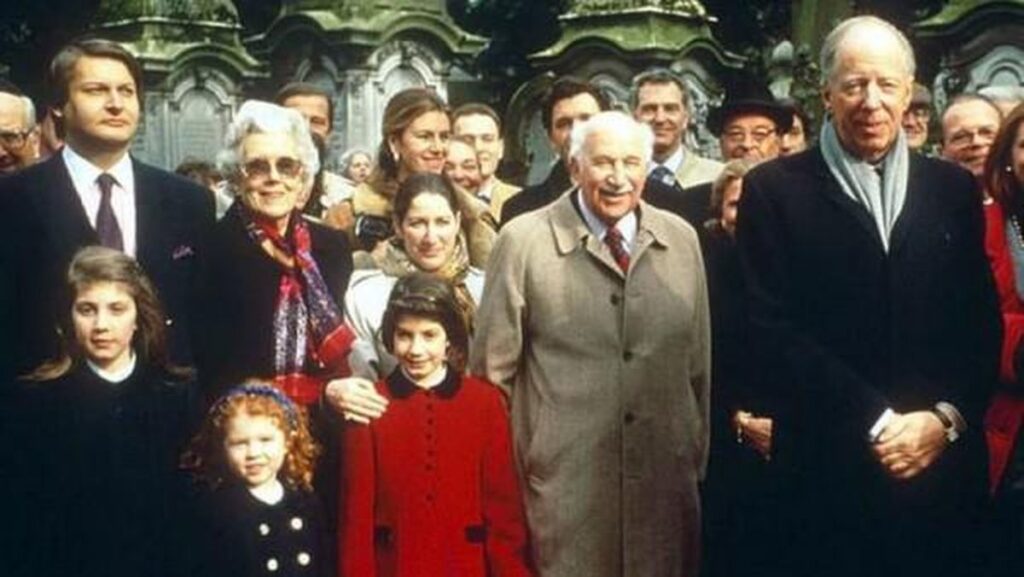In the world of global wealth, few names carry as much historical influence as the Rothschild family. Starting from humble beginnings in Frankfurt in the 18th century, Mayer Amschel Rothschild laid the foundation for one of the most powerful financial dynasties of all time. Today, more than two centuries later, the Rothschild name is not only a symbol of prosperity, but also an enduring legacy, a forward-thinking strategic vision, and a resilience that has been passed down from generation to generation.
For modern family businesses—especially those that have grown into holding companies—the Rothschild model offers valuable lessons in designing long-lasting wealth management strategies. Resilience, in this context, is not merely about protecting assets, but the ability to adapt to generational changes, economic turbulence, political upheavals, and transformations in the business world. It is about building wealth, governance, values, and a company that can endure beyond time and generations.
By studying long-lasting families like the Rothschild’s, we understand that wealth is not just about money. In fact, it is much more than that. This does not mean that financial wealth is unimportant. However, other forms of wealth are equally important. These include human capital, social capital, intellectual capital, and cultural capital.
The Capital of an Organization
Human capital includes the skills, education, and leadership potential of family members. Social capital includes networks, influence, and the family’s reputation. Intellectual capital includes knowledge, wisdom, and the ability to innovate, which are developed and passed down through generations. Cultural capital includes family values, heritage, traditions, and shared identity.
It is not only physical and financial assets that the Rothschild family has accumulated, but also a culture of responsibility, mutual support, and long-term vision. This culture is timeless, unlike financial assets. For today’s family businesses, a winning strategy begins with recognizing and actively developing the above capitals.

The Rothschild family diversified its business and leadership. So, it’s not just in its investment portfolio. They did this early on. The four sons of Mayer Amschel Rothschild were sent to financial hubs in Frankfurt, Vienna, London, Naples, and Paris. This bold move ensured the family left an economic footprint, enriched the knowledge of successors about local conditions, and, of course, mitigated risk (since capital wasn’t concentrated in one place).
This model became the forerunner of the family holding company. Each unit operated semi-independently. However, strategic coordination was still carried out. Communication was secure, operations were interconnected, and leadership was built on trust. If one region experienced a crisis, other branches remained unaffected.
The Rothschild Family’s Wealth Strategy
The absence of reliable governance is one of the reasons why many family businesses fail to survive beyond three generations. In the early days, the Rothschild family relied heavily on informal governance. Although informal, the rules of conduct for this family were very strict: endogamy (the principle of marriage that requires people to find a spouse within their own social circle, such as among relatives, within the same social class, or within the same neighbourhood), secrecy, and loyalty. These rules of conduct had to be upheld.
Later, formal structures were introduced as complexity increased. Institutions such as guardianship, family councils, succession agreements, and family protocols helped the family manage the transition of power harmoniously, avoiding the disputes that often plagued other dynasties.
Governance must evolve alongside the growth of the business and the family. However, the principles embedded in governance—transparency, accountability, responsibility, independence, and fairness—must remain steadfast.
The Rothschild family built a layered structure involving holding companies, trusts, and partnerships. Today, many wealthy families are adopting similar models. The existence of holding companies allows family businesses to consolidate assets with a unifying vision, contain the risk of each subsidiary, plan for a smooth intergenerational transfer of wealth, and separate ownership from management.
However, one thing should not be forgotten. Structure is important, but it will not be effective without a deep sense of responsibility for the continuity of the legacy, impact, and sustainability of the family’s wealth.
Vanderbilt: The Antithesis of Rothschild
In contrast to the Rothschild family, the Vanderbilt family experienced a decline due to poor wealth management. At the height of its power in the late 19th century, the Vanderbilt family was one of the wealthiest dynasties in America. Cornelius “Commodore” Vanderbilt amassed his extraordinary fortune through shipping and railroad businesses—estimated to exceed 100 million US dollars at his death in 1877 (equivalent to billions of dollars today). However, by the mid-20th century, most of the family’s fortune had been lost.

Why did this happen? What went wrong? The Vanderbilt family failed to establish family rules or a holding company. This was in stark contrast to the Rothschild family. Additionally, the heirs went their separate ways without a shared vision to unite them.
The third and fourth generations enjoyed a life of luxury, while the family’s wealth did not increase in value. By the 1970s, many of the Vanderbilt family’s grand homes had been sold or converted into museums.
Another mistake was a lack of knowledge about wealth management, especially for the heirs. It seems that the heirs were not taught that the wealth they had inherited was not easily obtained, but was the result of hard work and sacrifice. It is no wonder that their parents’ inheritance was squandered.
In terms of business management, the Vanderbilt family seemed reluctant to diversify. They invested too much of their wealth in building railroads. However, with the growing automotive and aviation industries, the need for railroads decreased.
In the 1970s, Gloria Vanderbilt, a journalist and one of the descendants of the Vanderbilt family, noted that not a single member of her family was wealthy. Meanwhile, the Rothschild family managed to maintain and even expand their wealth over centuries, despite facing various challenges such as wars, political upheavals, and financial crises.
Related Posts:
Five Essential Funds vs. Paylater: Financial Management Strategies that Impact Engagement and Wellbeing
Toxic Positivity in the Workplace: When Excessive Work Motivation Backfires
Understanding the Phenomena of Job Hugging & Job Hopping in the World of Work in 2025
When Organizational Culture Loses Its Way: The Risk of an Overly Flexible Structure
When Google’s Business Domination is on the Line











